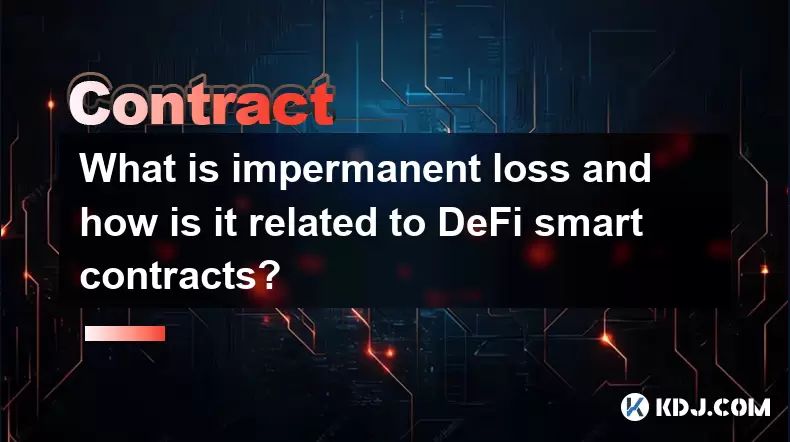-
 Bitcoin
Bitcoin $118600
0.36% -
 Ethereum
Ethereum $3855
1.06% -
 XRP
XRP $3.195
-0.09% -
 Tether USDt
Tether USDt $1.000
-0.04% -
 BNB
BNB $844.5
6.23% -
 Solana
Solana $191.3
2.83% -
 USDC
USDC $0.9997
-0.01% -
 Dogecoin
Dogecoin $0.2376
0.10% -
 TRON
TRON $0.3242
0.83% -
 Cardano
Cardano $0.8222
0.13% -
 Hyperliquid
Hyperliquid $45.26
6.53% -
 Sui
Sui $4.200
-2.56% -
 Stellar
Stellar $0.4336
-1.24% -
 Chainlink
Chainlink $18.86
0.28% -
 Hedera
Hedera $0.2796
-1.75% -
 Bitcoin Cash
Bitcoin Cash $583.3
-1.84% -
 Avalanche
Avalanche $27.06
8.09% -
 Litecoin
Litecoin $112.3
-1.16% -
 Toncoin
Toncoin $3.353
0.58% -
 UNUS SED LEO
UNUS SED LEO $8.968
-0.11% -
 Shiba Inu
Shiba Inu $0.00001395
-0.54% -
 Ethena USDe
Ethena USDe $1.001
-0.03% -
 Uniswap
Uniswap $10.76
0.69% -
 Polkadot
Polkadot $4.175
0.26% -
 Monero
Monero $326.7
1.07% -
 Bitget Token
Bitget Token $4.665
1.61% -
 Dai
Dai $0.9998
-0.02% -
 Pepe
Pepe $0.00001271
0.32% -
 Cronos
Cronos $0.1416
2.01% -
 Aave
Aave $299.3
1.15%
What is impermanent loss and how is it related to DeFi smart contracts?
Impermanent loss occurs when liquidity providers lose value due to price divergence in DeFi pools, often offset by trading fees but still a key risk in AMM-based platforms.
Jul 28, 2025 at 08:28 pm

Understanding Impermanent Loss in DeFi
Impermanent loss is a term that frequently appears in the decentralized finance (DeFi) ecosystem, particularly when users participate in liquidity provision. It refers to the temporary difference in value between holding tokens in a liquidity pool versus holding them in one's wallet outside of any pool. This phenomenon occurs due to the way automated market makers (AMMs) adjust token prices based on supply and demand within the pool.
When a user deposits two tokens into a liquidity pool—such as ETH and DAI in a 50/50 ratio—the AMM uses a constant product formula like x * y = k to maintain price equilibrium. If the external market price of one token changes significantly compared to the other, arbitrage traders step in to balance the pool by buying the undervalued token or selling the overvalued one. As a result, liquidity providers may end up with more of the depreciating asset and less of the appreciating one, leading to a potential loss in dollar value compared to simply holding the assets.
The Role of Smart Contracts in Liquidity Provision
DeFi smart contracts are at the heart of impermanent loss scenarios. These self-executing agreements, typically built on blockchains like Ethereum, manage liquidity pools without intermediaries. When users deposit funds into a pool, they receive liquidity provider (LP) tokens in return, which represent their share of the pool’s total assets.
The smart contract governs how assets are traded, priced, and withdrawn. However, because it does not adjust token ratios dynamically to reflect real-time market prices, discrepancies arise. The constant product formula ensures that the product of the reserves remains unchanged unless trades or arbitrage occur. This mechanism, while efficient for decentralized trading, exposes liquidity providers to price divergence, which is the core cause of impermanent loss.
How to Calculate Impermanent Loss
Calculating impermanent loss involves comparing the value of your deposited assets in the pool versus what you would have had if you held them outside the pool. The formula used is:
Impermanent Loss = (Value of Assets in Pool) - (Value of Holding Assets)For example, suppose you deposit 1 ETH and 1000 DAI into a pool where the ETH/DAI price is 1000:1. Later, the price of ETH rises to 4000 DAI. Due to arbitrage, the pool will now contain more ETH and fewer DAI than before. Your share might now be worth 0.5 ETH and 2000 DAI. The combined value is 4000 DAI. If you had simply held 1 ETH and 1000 DAI, your total would be 5000 DAI. Hence, you’ve suffered an impermanent loss of 1000 DAI.
Smart contract interfaces often display this information automatically, but understanding the math behind it can help users make informed decisions about pool participation.
Strategies to Mitigate Impermanent Loss
While impermanent loss cannot be completely eliminated in traditional AMM-based pools, several strategies can help reduce its impact:
- Choose stablecoin pairs: Providing liquidity to pools like USDC/DAI minimizes price volatility, reducing the chances of significant impermanent loss.
- Use concentrated liquidity models: Platforms like Uniswap V3 allow users to define price ranges for their liquidity, limiting exposure to volatile price swings.
- Monitor fees earned: High trading volume can offset impermanent loss through accumulated transaction fees, which are distributed to liquidity providers.
- Avoid highly volatile pairs: Pools with tokens that experience rapid price fluctuations increase the risk of loss, so caution is advised.
By carefully selecting pools and monitoring performance, users can better manage their exposure to impermanent loss while still participating in yield-generating activities.
Smart Contract Risks Associated with Liquidity Provision
Beyond impermanent loss, DeFi participants must also consider risks inherent to the smart contracts themselves. Bugs, vulnerabilities, or malicious code in the contract can lead to funds being frozen or stolen. Although major platforms like Uniswap or SushiSwap undergo audits, no system is entirely immune to exploits.
Additionally, some pools may introduce governance tokens as incentives, which come with their own volatility and lock-up periods. Users should always perform due diligence on the protocol, review audit reports, and understand the terms of engagement before depositing funds.
Another factor is slippage, which can affect withdrawal amounts during high volatility or low liquidity conditions. Smart contracts execute trades based on predefined rules, and sudden market shifts may result in receiving fewer tokens than expected upon exit.
Frequently Asked Questions (FAQ)
Q1: Can impermanent loss become permanent?
Yes, impermanent loss becomes permanent once the liquidity provider withdraws their funds from the pool. Until then, it is considered "impermanent" because the loss could potentially reverse if prices return to the original deposit level.
Q2: Are all DeFi platforms affected by impermanent loss?
No, only platforms using automated market makers (AMMs) are subject to impermanent loss. Order book-based exchanges or peer-to-peer lending protocols do not expose users to this type of risk.
Q3: Is there a way to track impermanent loss in real time?
Yes, several DeFi analytics tools such as Impermanent.Finance or Dune Analytics dashboards allow users to monitor their impermanent loss across multiple pools in real time.
Q4: Does providing liquidity on Uniswap V3 eliminate impermanent loss?
Uniswap V3 reduces the impact of impermanent loss through concentrated liquidity positions, but it does not eliminate it entirely. Users who set narrow price ranges can still face losses if the asset price moves outside that range.
Disclaimer:info@kdj.com
The information provided is not trading advice. kdj.com does not assume any responsibility for any investments made based on the information provided in this article. Cryptocurrencies are highly volatile and it is highly recommended that you invest with caution after thorough research!
If you believe that the content used on this website infringes your copyright, please contact us immediately (info@kdj.com) and we will delete it promptly.
- Tinubu's Grand Gesture: Super Falcons Soar with Rewards and Recognition
- 2025-07-29 02:30:12
- Rare Coin Sells for £180,000 at Auction: A Glimpse into Numismatic Treasures
- 2025-07-29 02:30:12
- Pepe Dollar vs. Bitcoin HYPER: The Crypto Supercycle Meme Showdown
- 2025-07-29 01:10:12
- BlockDAG, BNB, DOGE: The New York Minute on 2025's Crypto Frontrunners
- 2025-07-29 01:50:12
- AVAX, Solana, and the AI Token Surge: What's Hot and What's Not
- 2025-07-29 01:50:12
- XRP Price Surge Potential: Chart Analysis and What's Next
- 2025-07-29 01:55:48
Related knowledge

Why is my Bitstamp futures position being liquidated?
Jul 23,2025 at 11:08am
Understanding Futures Liquidation on BitstampFutures trading on Bitstamp involves borrowing funds to open leveraged positions, which amplifies both po...

Does Bitstamp offer inverse contracts?
Jul 23,2025 at 01:28pm
Understanding Inverse Contracts in Cryptocurrency TradingIn the realm of cryptocurrency derivatives, inverse contracts are a specific type of futures ...

What is the difference between futures and perpetuals on Bitstamp?
Jul 27,2025 at 05:08am
Understanding Futures Contracts on BitstampFutures contracts on Bitstamp are financial derivatives that allow traders to speculate on the future price...

How to find your Bitstamp futures trade history?
Jul 23,2025 at 08:07am
Understanding Bitstamp and Futures Trading AvailabilityAs of the current state of Bitstamp’s service offerings, it is critical to clarify that Bitstam...

Can I use a trailing stop on Bitstamp futures?
Jul 23,2025 at 01:42pm
Understanding Trailing Stops in Cryptocurrency TradingA trailing stop is a dynamic type of stop-loss order that adjusts automatically as the price of ...

Can I use a trailing stop on Bitstamp futures?
Jul 25,2025 at 02:28am
Understanding Trailing Stops in Cryptocurrency Futures TradingA trailing stop is a dynamic type of stop-loss order that adjusts automatically as the m...

Why is my Bitstamp futures position being liquidated?
Jul 23,2025 at 11:08am
Understanding Futures Liquidation on BitstampFutures trading on Bitstamp involves borrowing funds to open leveraged positions, which amplifies both po...

Does Bitstamp offer inverse contracts?
Jul 23,2025 at 01:28pm
Understanding Inverse Contracts in Cryptocurrency TradingIn the realm of cryptocurrency derivatives, inverse contracts are a specific type of futures ...

What is the difference between futures and perpetuals on Bitstamp?
Jul 27,2025 at 05:08am
Understanding Futures Contracts on BitstampFutures contracts on Bitstamp are financial derivatives that allow traders to speculate on the future price...

How to find your Bitstamp futures trade history?
Jul 23,2025 at 08:07am
Understanding Bitstamp and Futures Trading AvailabilityAs of the current state of Bitstamp’s service offerings, it is critical to clarify that Bitstam...

Can I use a trailing stop on Bitstamp futures?
Jul 23,2025 at 01:42pm
Understanding Trailing Stops in Cryptocurrency TradingA trailing stop is a dynamic type of stop-loss order that adjusts automatically as the price of ...

Can I use a trailing stop on Bitstamp futures?
Jul 25,2025 at 02:28am
Understanding Trailing Stops in Cryptocurrency Futures TradingA trailing stop is a dynamic type of stop-loss order that adjusts automatically as the m...
See all articles

























































































